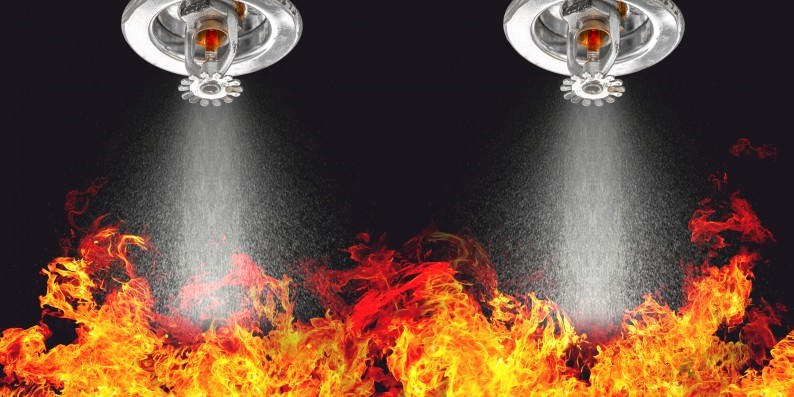Two unsprinklered Factory fires, Same outcome: two destroyed buildings
Two unsprinklered Factory fires, same outcome: two destroyed buildings. Tom Roche, Secretary of the Business Sprinkler Alliance
In early April, when industrial fires broke out in two different locations, they both had the same devastating outcome. On the 10th April, a fire started in a furniture factory in County Antrim damaging the building. Two days later, a fire swept through a bedmaking factory in Dewsbury. Neither building contained a sprinkler system and both businesses are now counting the cost of the damage and dealing with the disruption to their livelihoods. Once again, we must question the understanding of the vulnerability to such fires and the gap in regulations.
The fire at Abbey Upholsterers in Carrickfergus started in the early hours of Saturday and completely ravaged a major part of 6,000m2 industrial building, despite the efforts of 70 firefighters from the Northern Ireland Fire and Rescue Service. Local roads were closed and residents were asked to close their windows due to smoke. The deputy mayor of the local council expressed his shock at the event as the business is an important local employer, supplying furnishing products to hotels across the UK and Ireland.
In Dewsbury on Monday 12th April, eight fire engines and two aerial appliances from West Yorkshire Fire and Rescue Service spent several hours putting out a blaze at the 2,800m2 Matza factory, with smoke plumes that could be seen as far away as Huddersfield. The local family-run bedmaking business employed 50 workers, who like the company, face an uncertain future.
In both cases, these are industrial buildings that have no guidance for compartment size limits or the need for sprinklers.
The Fire Safety Building Regulations (FSBR) guidance envisages unlimited size industrial buildings. In the case of warehouses they can be 14 – 20,000m2 in footprint and in many cases up to 18m tall, without incurring guidance for subdivision or sprinklers. Such buildings are truly enormous, roughly six times the size of your average out-of-town DIY store. But the FSBR makes no consideration for the protection of property or indeed the minimising of the spread of fire within the building.
The building will survive for the period it takes to get people out, after which we transition into a period where the inherent resilience diminishes. They have physical limitations when it comes to firefighting due to their compartment size. There is a twisted logic that says the building is disposable in the event of fire.
Industrial fires such as these once again highlight the rationale for greater consideration of property protection alongside life safety as a reasonable requirement. Such an expectation would result in more buildings being designed to be resilient to disproportionate damage, using combinations of passive and active fire safety measures. The BSA believes that sprinkler systems would be a major part of this change and should be considered more readily as a viable option right across the built environment, whether it is a care home, block of flats, hospital, school, retail or leisure facility or a commercial and industrial building.
We must always be thankful when a fire is contained and extinguished with no loss of life, but it is not enough. Lives are still affected regardless, and we must strive to minimise the effect that fire has in all circumstances. When we minimise fire spread we not only protect lives, we protect property, businesses and jobs. A properly controlled fire can be the difference between a building requiring renovation or demolition. Halting the spread of fire when it is first detected is the best way to limit damage and minimise costs and impacts. Sprinklers have been shown to contain, control or extinguish fires in 99% of cases1. The impacted business can be operational within hours, avoiding the economic and social costs.
Given the availability of solutions, it begs the question as to why do we continue to repeat the same actions over and over again and expect different results? We need to break the chain and have the discussion on minimising fire damage and property protection for the benefit of our wider communities, the environment, longer-term business security, and the mutual benefits it will bring.
For more information about the BSA visit the www.business-sprinkler-alliance.org
1Efficiency and Effectiveness of Sprinkler Systems in the United Kingdom: An Analysis from Fire Service Data – Optimal Economics May 2017

